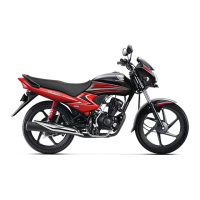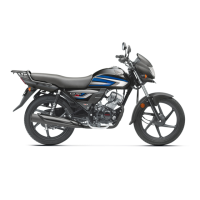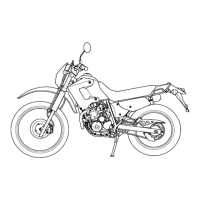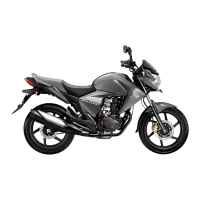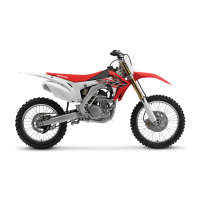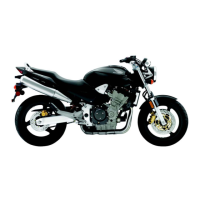Do you have a question about the Honda Dream Neo and is the answer not in the manual?
Advises careful reading of the manual, especially safety messages.
Key recommendations for rider safety including helmet use and visibility.
Advises against exceeding personal abilities and warns about factors affecting judgment.
Warns against mixing alcohol with riding due to impaired reaction time.
Warns about risks of using non-Honda accessories or modifying the vehicle.
Advises against modifying the vehicle, detailing potential safety risks.
Details the adjustment of the rear shock absorber for different load conditions.
Explains front brake adjustment and freeplay maintenance.
Illustrates shock absorber and pin spanner for preload adjustment.
Explains how to adjust rear brake pedal freeplay using the adjusting nut.
Details clutch adjustment requirements and normal lever freeplay.
Details the daily check procedure for engine oil level using the dipstick.
Provides a chart showing recommended engine oil grades for different temperatures.
Information on tyre type, size, condition, and inflation for safe operation.
Explains the ignition switch positions (LOCK, OFF, ON) and key removal.
Procedure for locking and unlocking the steering.
Importance and steps for performing a pre-ride inspection for safety.
Provides steps and precautions for starting the engine.
Instructions for starting the engine when it is already warm.
Guidance for the initial 500 km (300 miles) to ensure reliability and performance.
Key safety tips for braking, preventing wheel lock, and riding in adverse conditions.
Procedure for parking the vehicle safely, including using the center stand.
Recommendations to prevent vehicle theft.
Explains why vehicle maintenance is crucial for safe, economical, and trouble-free riding.
Lists crucial safety steps like turning off the engine and ensuring ventilation.
Explains service codes (I, C, R, A, L) and notes for frequent servicing.
Explains the importance of valve clearance and when it should be serviced by a dealer.
Explains repair/replacement policy, warranty period, and exclusions.
Details the emission warranty terms and conditions.
Lists conditions for accepting emission warranty claims, like adherence to manual.
Details conditions under which the emission warranty is not applicable.
Specifies conditions where warranty is not applicable, like lack of PUC certificate.
Specifies parts covered under emission warranty and general conditions.
| Engine Type | Air-cooled, 4-stroke, SI engine |
|---|---|
| Displacement | 109.19 cc |
| Max Torque | 8.63 Nm @ 5500 rpm |
| Fuel System | Carburetor |
| Front Suspension | Telescopic Fork |
| Rear Suspension | Spring Loaded Hydraulic Type |
| Front Brake | Drum |
| Rear Brake | Drum |
| Fuel Tank Capacity | 8 liters |
| Rear Tyre Size | 2.75-18 |
| Ground Clearance | 179 mm |
| Wheelbase | 1258 mm |
| Max Power | 8.31 PS @ 7500 rpm |
| Starting Method | Kick / Self Start |
| Transmission | 4-speed |
